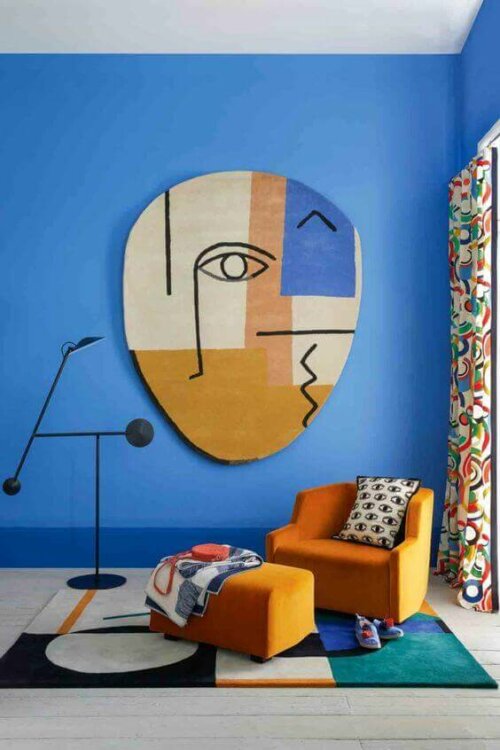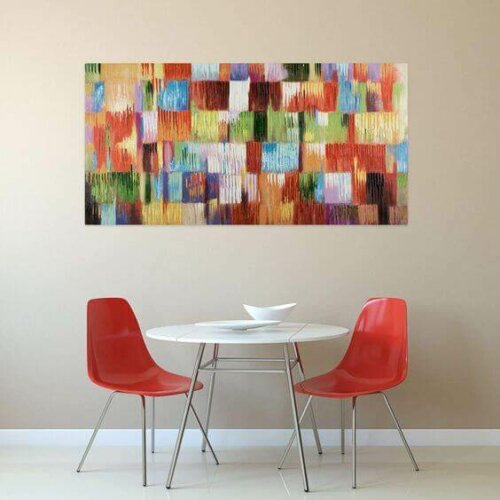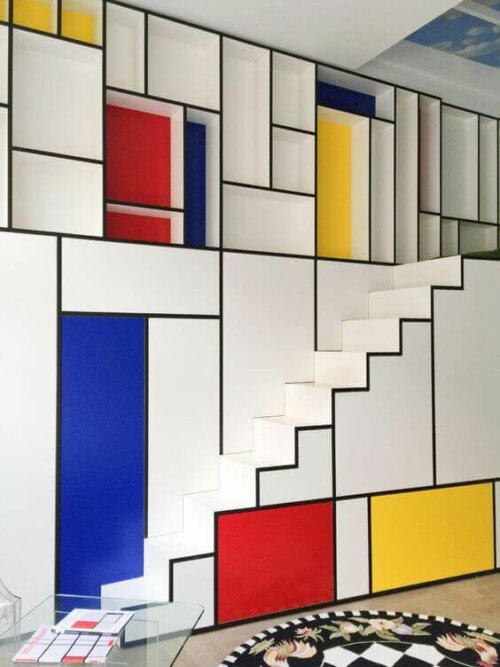The Influence of Cubism in Home Decoration

Interior designers today take some inspiration from some historical avant-garde ideas. As a result, cubism in home decoration is becoming a more interesting way to add intrigue to spaces.
Pablo Picasso is one of the significant artists of the cubism style. Although Picasso is known for his paintings, artists use the characteristics of his style in other art forms as well.
Nowadays, some interior designers choose the aesthetics of cubism in home decoration. For example, they use furniture, colors, patterns, and shapes related to this trend.
Aesthetic principles of cubism

Cubists question different artistic concepts from centuries ago. These artists avoid being defined in any conventional way. For example, all the shapes, perspectives, angles, and colors take a different approach, which was previously uncommon.
Cubism began in 1907, based on the work of Pablo Picasso and Georges Braque. The principle aesthetic of this style impacted the entire western world and created a new trend.
However, nowadays there aren’t any such ground-breaking artistic styles as cubism. But this style is still used and applied to other fields of art, such as interior design.
“Cubism is not abstract. It has to do with the world around us.”
-David Hockney-
5 characteristics of cubism in home decoration

There are a series of cubist characteristics that can be useful in shaping decoration and structure in an interior. Let’s look at the 5 fundamental characteristics applicable in homes:
- Breaking with traditional perspectives. There aren’t any lines that direct the eye to specific points of a room. Cubism avoids any concepts of depth. However, you can separate the space into different areas.
- Geometry is a key component in cubist designs. Lots of acute angles, circles, and triangular and quadrangular shapes. As a result, many designers opt for triangular furniture.
- Furniture should be the principal focal point. Each piece should be geometric in some way. For example, tables, sofas, or any other piece of furniture should have some linearity or well-marked angles.
- Simple colors for walls. Neutral tones help complement decoration. As a result, designers usually opt for walls with simple colors, such as gray, earth tones, or white.
- Decorative wall resources. There is no doubt that you can use any element on the walls for decoration. However, you shouldn’t forget that the content should align with cubist aesthetics.
Cubism in home decoration – paintings for the walls

Without a doubt, one prominent decorative resource should be cubist wall paintings. In fact, these are an eloquent way to display the style and you can use them to decorate rooms or hallways.
Generally, we use art to decorate spaces. However, in this case, art can help complete the look.
There are many great art collectors that have the luxury of acquiring authentic paintings from famous artists, such as Picasso. However, not everyone has this option. In fact, there are lots of great options that simulate works by well-known artists.
Paintings are a great resource for representing cubism.
Why make your home an avant-garde space?

Avant-garde artists contribute a lot to the world of interior design. Cubism is a unique perspective and has a lot to contribute to interiors.
Cubism in home decoration is less about the number of cubist elements, but rather the purpose of each one. In general, cubism and contemporary art are styles that offer lots of interesting possibilities. They are very original and result in unique decoration.
Interior designers today take some inspiration from some historical avant-garde ideas. As a result, cubism in home decoration is becoming a more interesting way to add intrigue to spaces.
Pablo Picasso is one of the significant artists of the cubism style. Although Picasso is known for his paintings, artists use the characteristics of his style in other art forms as well.
Nowadays, some interior designers choose the aesthetics of cubism in home decoration. For example, they use furniture, colors, patterns, and shapes related to this trend.
Aesthetic principles of cubism

Cubists question different artistic concepts from centuries ago. These artists avoid being defined in any conventional way. For example, all the shapes, perspectives, angles, and colors take a different approach, which was previously uncommon.
Cubism began in 1907, based on the work of Pablo Picasso and Georges Braque. The principle aesthetic of this style impacted the entire western world and created a new trend.
However, nowadays there aren’t any such ground-breaking artistic styles as cubism. But this style is still used and applied to other fields of art, such as interior design.
“Cubism is not abstract. It has to do with the world around us.”
-David Hockney-
5 characteristics of cubism in home decoration

There are a series of cubist characteristics that can be useful in shaping decoration and structure in an interior. Let’s look at the 5 fundamental characteristics applicable in homes:
- Breaking with traditional perspectives. There aren’t any lines that direct the eye to specific points of a room. Cubism avoids any concepts of depth. However, you can separate the space into different areas.
- Geometry is a key component in cubist designs. Lots of acute angles, circles, and triangular and quadrangular shapes. As a result, many designers opt for triangular furniture.
- Furniture should be the principal focal point. Each piece should be geometric in some way. For example, tables, sofas, or any other piece of furniture should have some linearity or well-marked angles.
- Simple colors for walls. Neutral tones help complement decoration. As a result, designers usually opt for walls with simple colors, such as gray, earth tones, or white.
- Decorative wall resources. There is no doubt that you can use any element on the walls for decoration. However, you shouldn’t forget that the content should align with cubist aesthetics.
Cubism in home decoration – paintings for the walls

Without a doubt, one prominent decorative resource should be cubist wall paintings. In fact, these are an eloquent way to display the style and you can use them to decorate rooms or hallways.
Generally, we use art to decorate spaces. However, in this case, art can help complete the look.
There are many great art collectors that have the luxury of acquiring authentic paintings from famous artists, such as Picasso. However, not everyone has this option. In fact, there are lots of great options that simulate works by well-known artists.
Paintings are a great resource for representing cubism.
Why make your home an avant-garde space?

Avant-garde artists contribute a lot to the world of interior design. Cubism is a unique perspective and has a lot to contribute to interiors.
Cubism in home decoration is less about the number of cubist elements, but rather the purpose of each one. In general, cubism and contemporary art are styles that offer lots of interesting possibilities. They are very original and result in unique decoration.
All cited sources were thoroughly reviewed by our team to ensure their quality, reliability, currency, and validity. The bibliography of this article was considered reliable and of academic or scientific accuracy.
- Cottington, David: Movimientos en el arte moderno: cubismo, Encuentro Ediciones, 1999.







